WWII pictures in Chicago
All pictures are from the Chicago Tribune
Over seven decades ago, Chicagoans had to come to grips with a cold, hard fact: The country was at war. Women by the droves went to work in defense plants and Chicago soon led the nation in war production. Consumer goods were scarce and rationed, so many people bought war bonds instead. Even children got into the war effort, buying 25-cent savings stamps, and bringing paper and kitchen fat to school during scrap drives. And of course, families waited fearfully for news of loved ones overseas.

Mrs. Lenore Radway, left, and Miss Sherley Becker polish a torpedo flask in 1943 at the Amertorp Torpedo Ordnance Corporation in Forest Park, Illinois. As many as 6,500 workers churned out hundreds of torpedoes per month, a long-forgotten but crucial part of the war effort.

Army engineers build a pontoon bridge across the Chicago River at State Street as a demonstration of their work, circa June 13, 1945. The Tribune Tower is visible in the background.
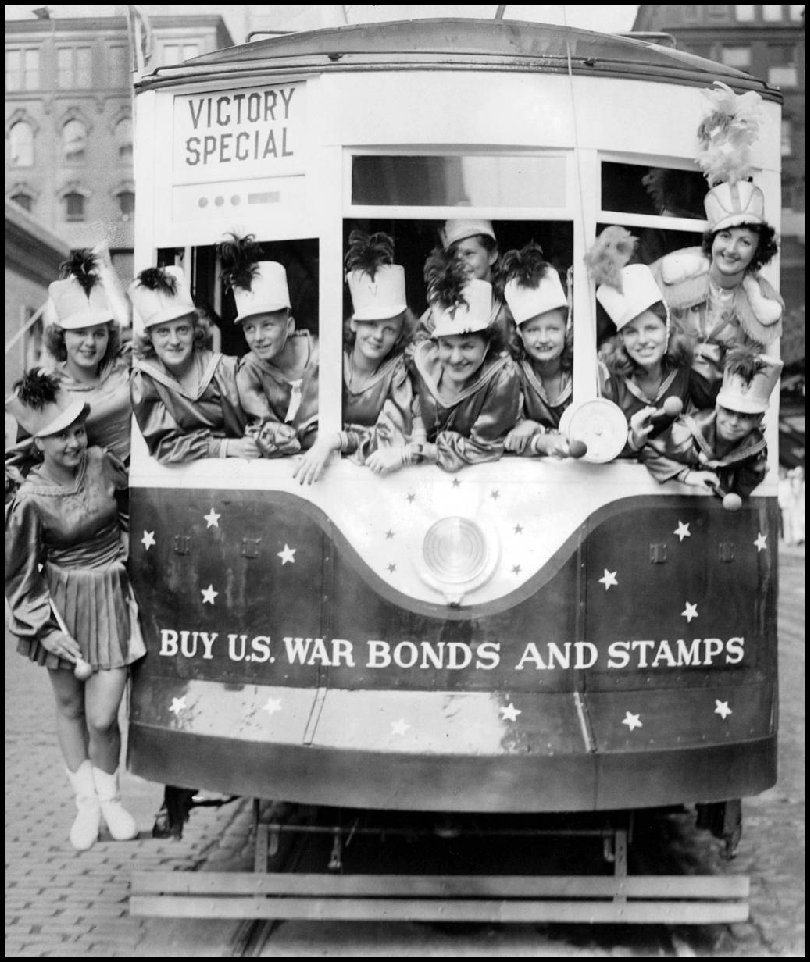
In July 1942, majorettes filled a street car painted red, white and blue to promote the sale of war bonds and stamps during World War II. The car was to go into regular service the next day on the Broadway Line.
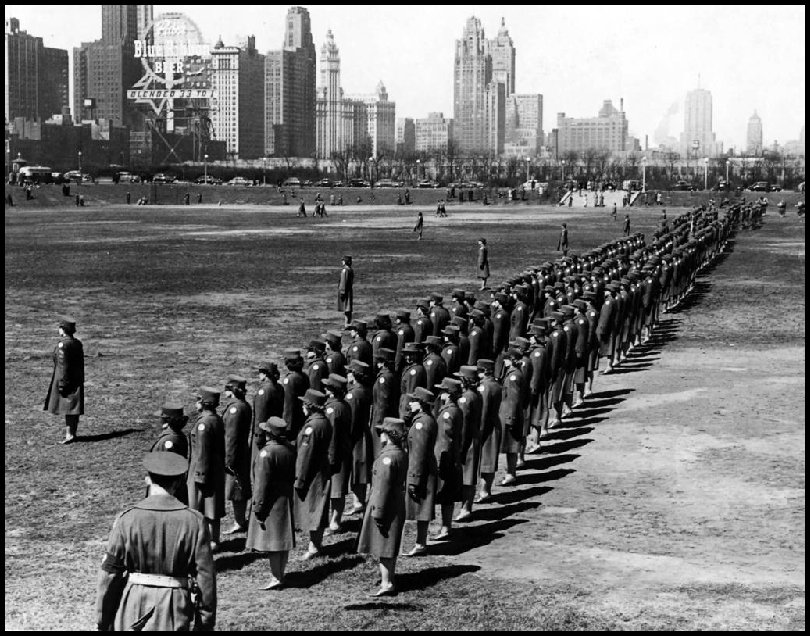
The Women's Army Corps march in Grant Park in Chicago in 1943 during World War II.

The Chicago Servicemen's Center at Michigan Avenue and Congress Street was opened in 1942 by Mayor Edward Kelly and the Chicago Commission on National Defense in the Auditorium Theatre building. June 26, 1944.

Jean Rose, 18, of Chicago, from left, Chief Petty Officer William Murphy, of Chicago, Phyllis Lurie, 18, of Chicago, and Jack Hooper, a Marine from Evansville, Indiana, enjoy soft drinks together at the Chicago Servicemen's Center. The Center was launched in August of 1941 by the Chicago Commission on National Defense through Mayor Edward J. Kelly. Editors note: This photo has a painted background. March 9, 1942.
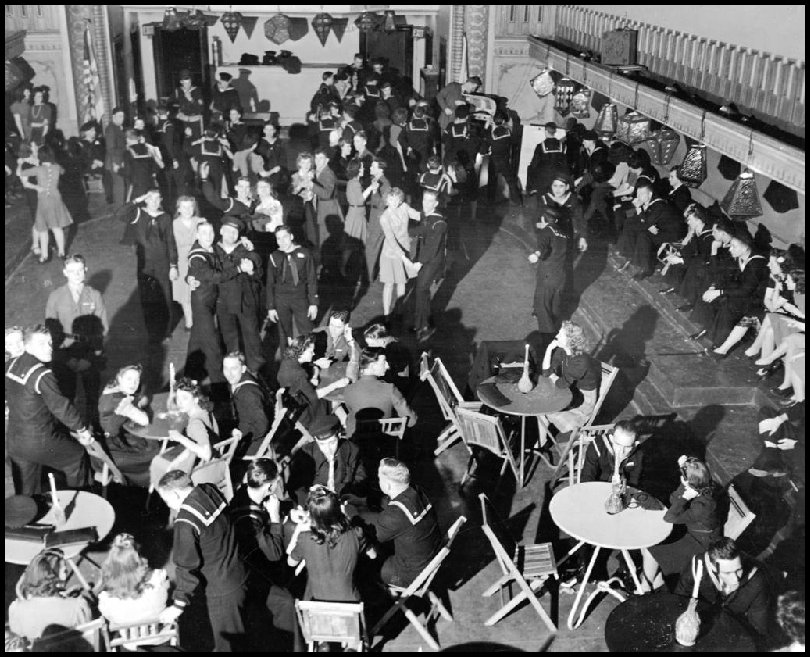
People enjoy a Saturday night in the Service Men's Center night club in 1942. As many as 26,000 men were jamming the building on weekends during World War II.
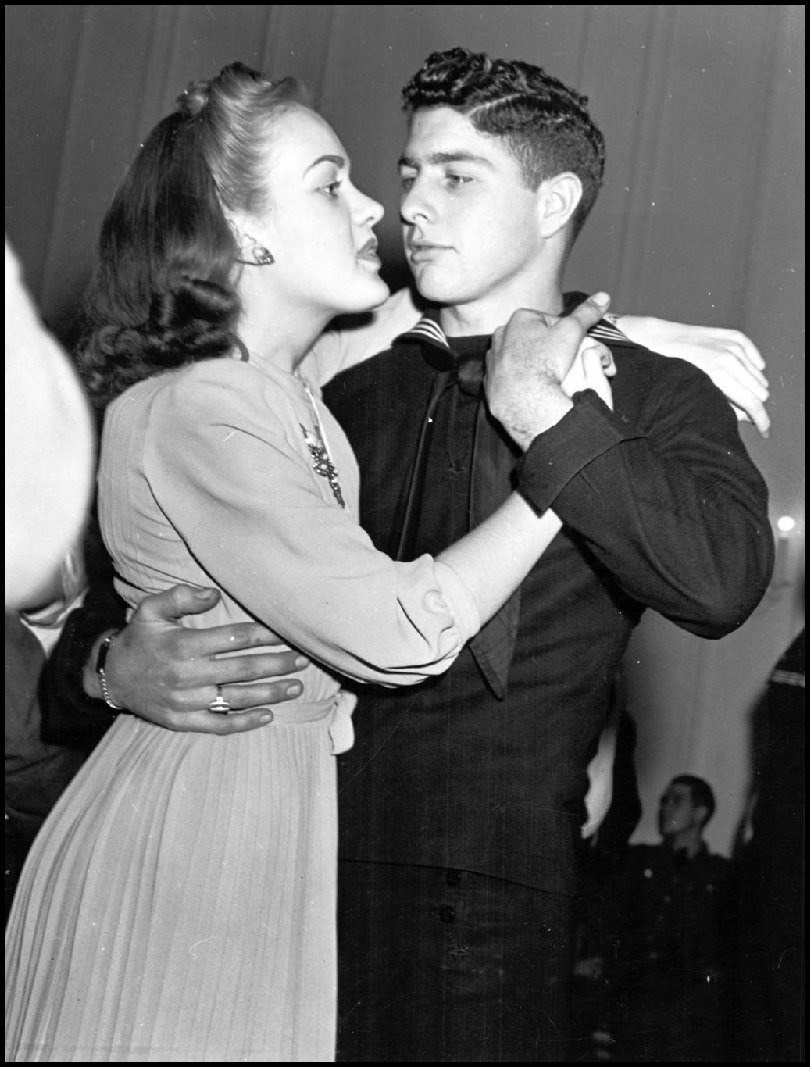
A couple dances at the Chicago Service Men's Center in December 1941.
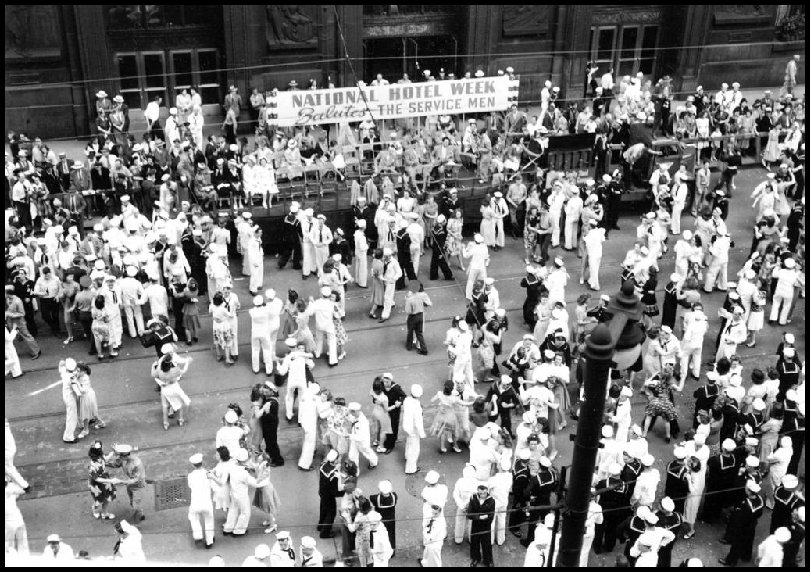
Soldiers and sailors from the Service Men's Center dance with women on LaSalle Street, between Washington and Randolph Streets, in Chicago.
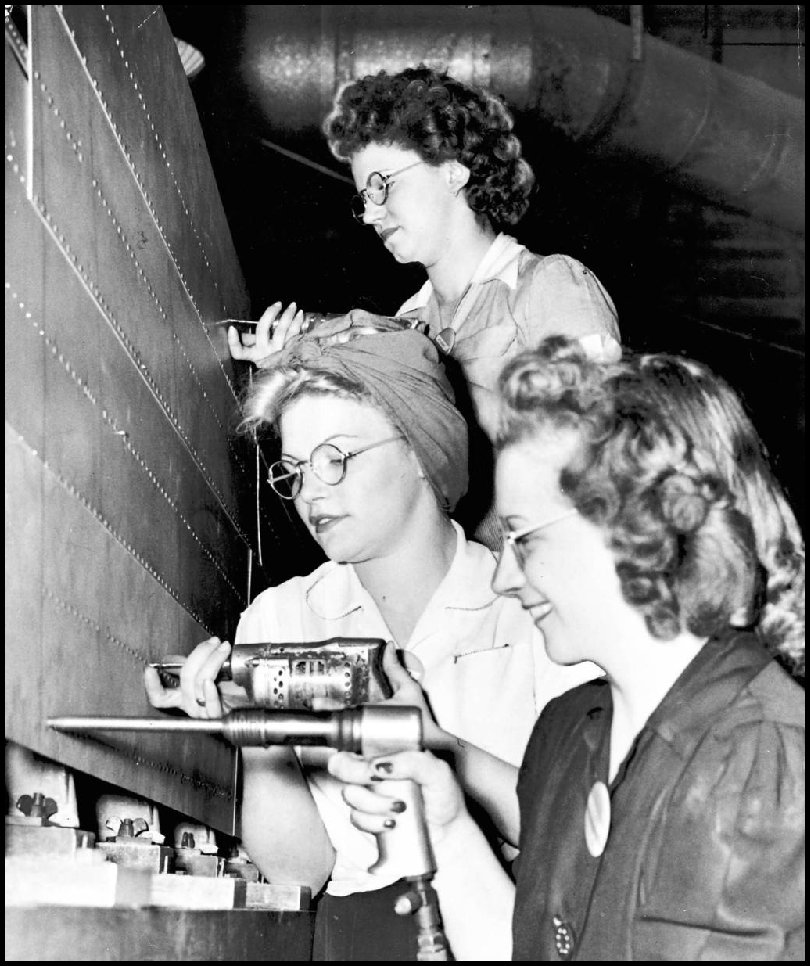
With millions of men inducted into the armed forces during World War II, women flooded into factories to do "men's work" here at home in Chicago.
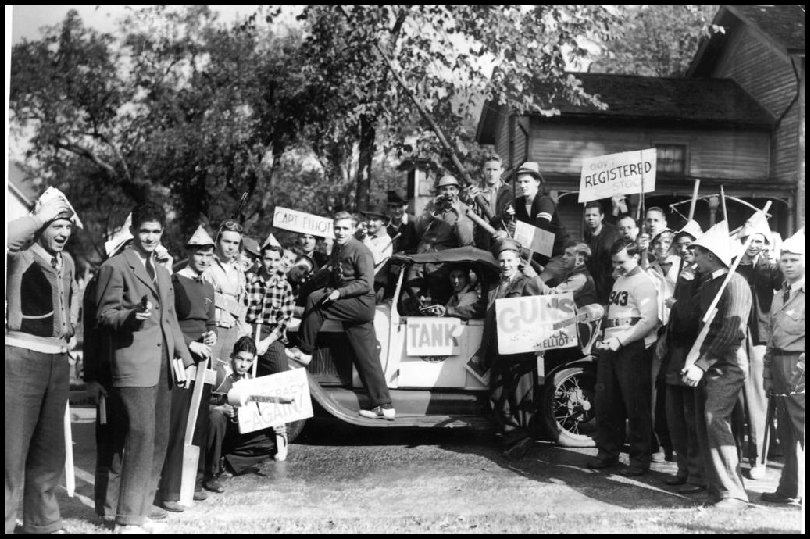
North Central College students protest the draft and the war scare that swept the country just before World War II, circa Oct. 16, 1940.

Cigarettes were hard to come by during World War II when Congress mandated that every soldier, sailor, and marine receive them as part of their rations. So more Americans, like this Chicago woman in March of 1939, turned to pipes.
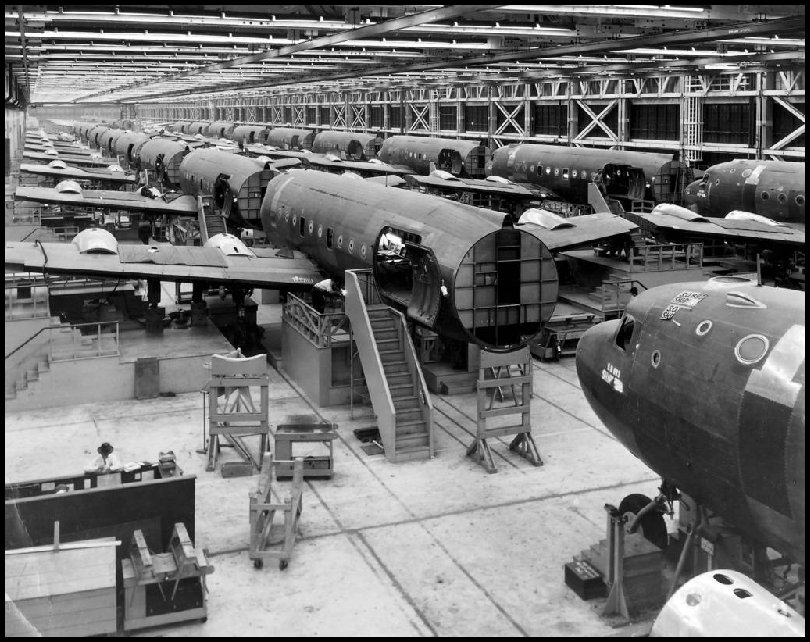
The assembly line in the Douglas Aircraft plant in Park Ridge, Ill., where wings are attached to the fuselage of big C-54 cargo planes. The plant was 15 percent ahead of schedule in June 1944. Douglas Aircraft, July 7, 1944.

The Tribune caption for this 1944 posed photograph read that Marge Kucinsky of Chicago "should be able to keep warm with all those war bonds." Pat Buttram, right, was the designer of the costume to promote the sale of bonds to help the U.S. fund World War II.
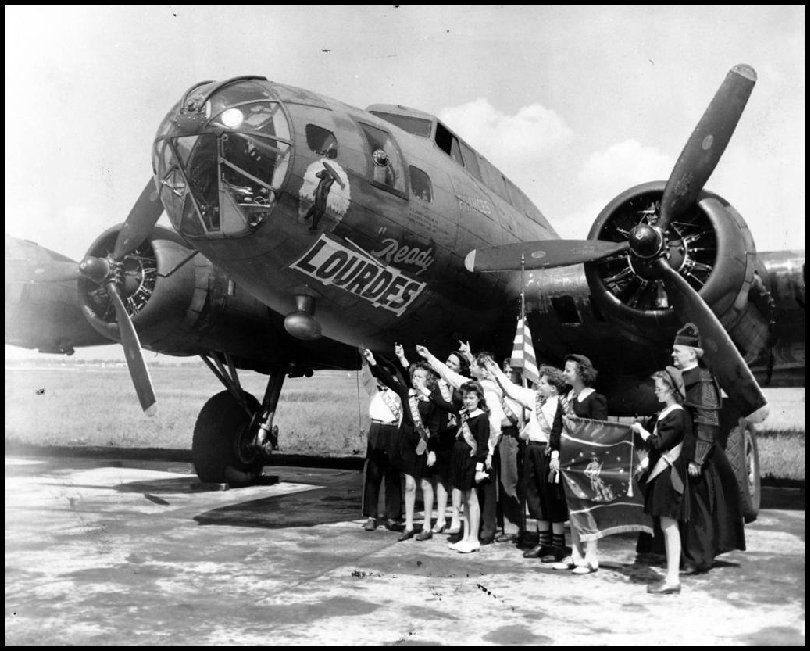
A B-17 bomber purported to have been paid for with their war bonds is christened by children of Our Lady of Lourdes parochial school, located at Ashland and Leland Avenues in Chicago, in June 1944. According to the caption on this archive image, "36 such planes have been bought by Chicago public and parochial school children."

U.S. Marine veterans of the war in the Pacific man a machine gun nest set up at State and Madison Streets. The demonstration was part of Marine Day and to help sell war bonds during World War II. Feb. 3, 1944.
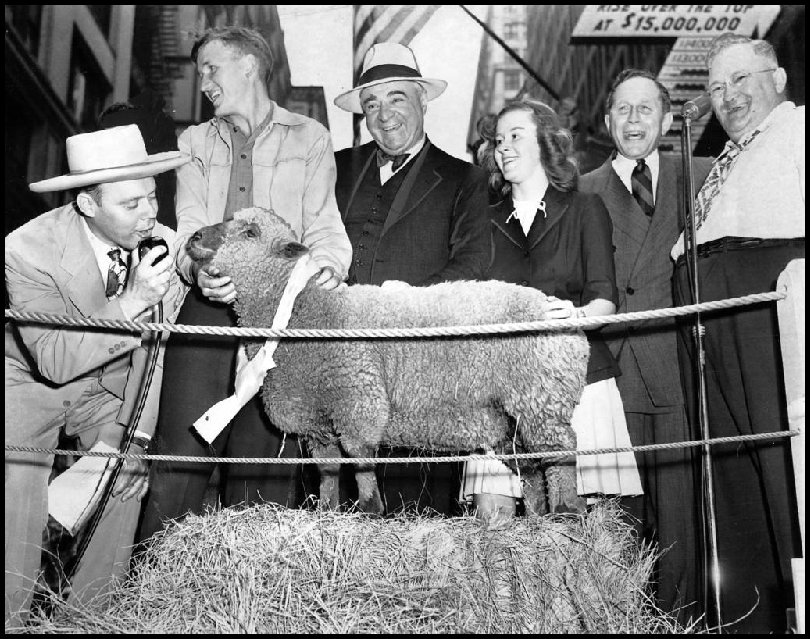
Marvin Gatz, of Polo, Ill., second from left, holds his prize lamb which sold for $20,000 in war bonds at a bond rally on State Street in Chicago, circa June 20, 1945. With Gatz are, from left, Les Lear, master of ceremonies, Ernest Byfield, the buyer, Lila Gatz, Marvin's sister, Lawrence Stern, bond drive chairman, and Max Farley, auctioneer.
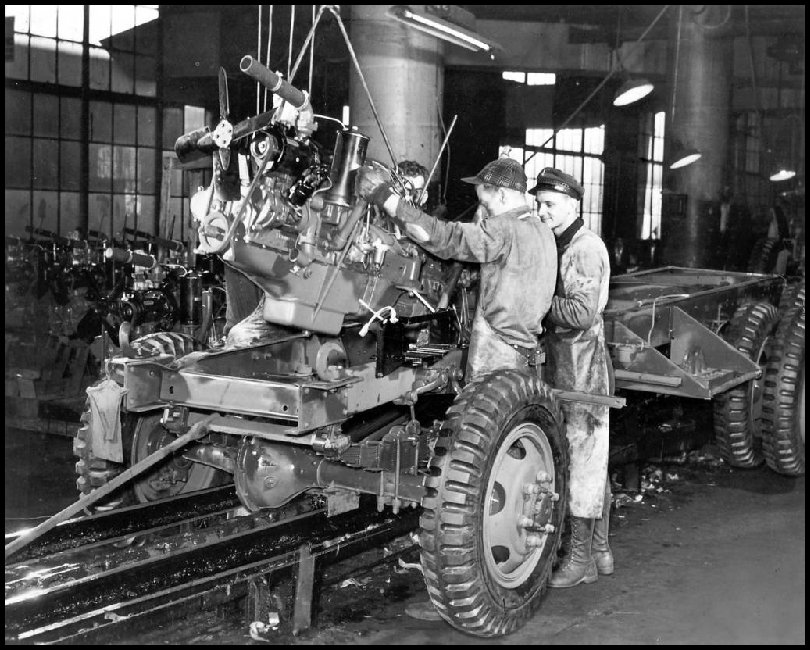
Workmen mount an engine to an Army truck near the end of the assembly line at The Studebaker Corporation in February 1942.

Lt. Lyudmila Pavlichenko, left, Russian sniper credited with killing more than 300 in World War II, arrives at the LaSalle Street station in Chicago. At right is Women's Army Auxiliary Corps Lt. Mary Daly. Sept. 26, 1942.

The Illinois Reserve Militia guard Midway Airport during World War II in Chicago, circa Jan. 12, 1942.
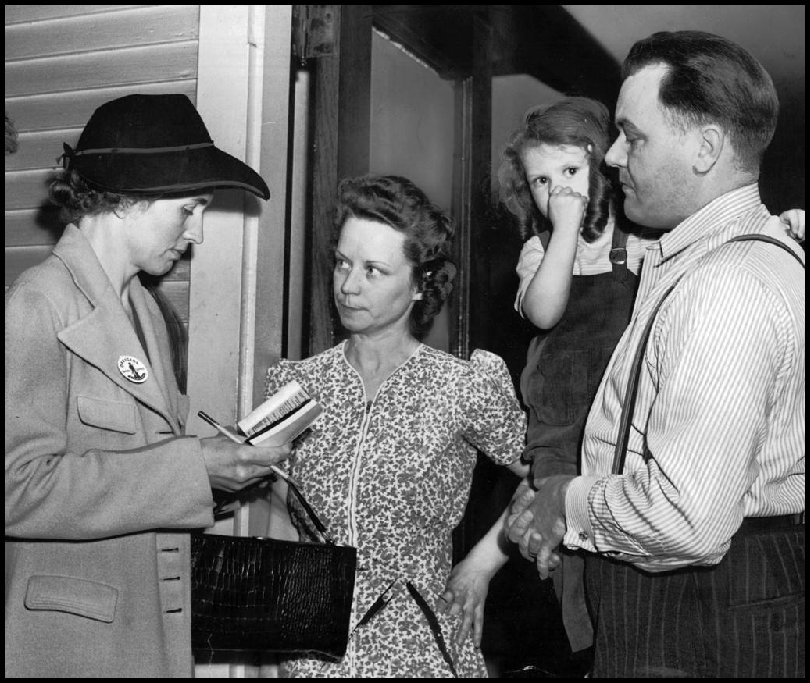
Mrs. George Hones, left, solicits a war bond purchase pledge from Eleanor Sanders, second from left, at Sanders home at 1439 Granville Avenue while her husband William and daughter Karen, 3, watch. May 11, 1942.
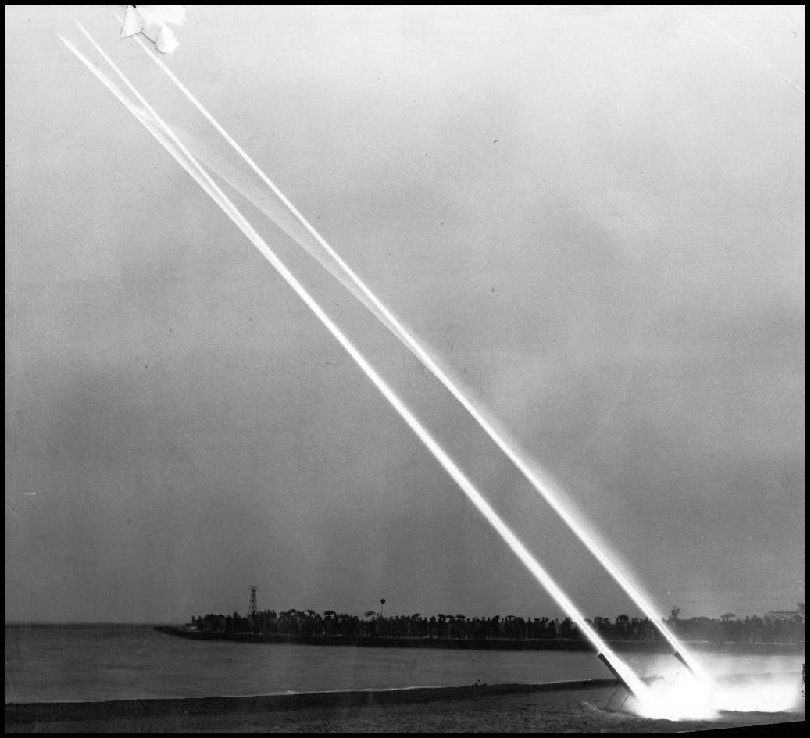
Rockets soar over Lake Michigan at night during a demonstration put on as a war bond drive by the Navy at Foster Avenue Beach in Chicago. June 15, 1945.
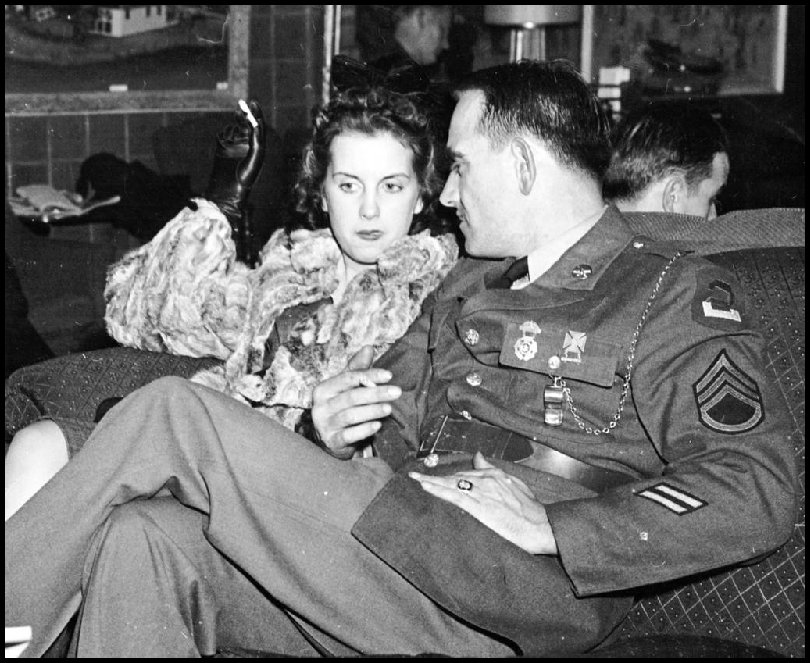
The Chicago Service Men's Center had comfortable lounges for conversation, like this one, circa Dec. 27, 1941. Women from various commercial and social groups volunteered their time at the center.
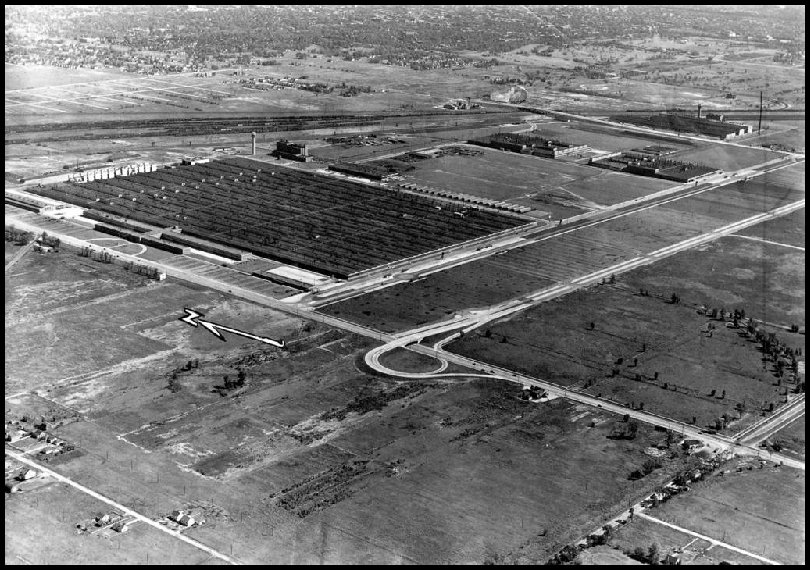
Air view of the biggest industrial plant in the world, the Dodge Chicago Plant at 75th and Pulaski Road on Sept. 9, 1945. By 1950, the Ford Motor company would be making 28 cylinder Pratt and Whitney Wasp Major engines for use in Air Force planes.

Rated as the worlds largest factory building, this is one of 15 buildings in Chrysler corporation's new Dodge Chicago Plant being built on Dec. 14, 1942. The structure was built starting at different ends at the same time. What appears to be another plant in the background is really the other end of the one in the foreground. Its roof covered more than 50 city blocks of land.
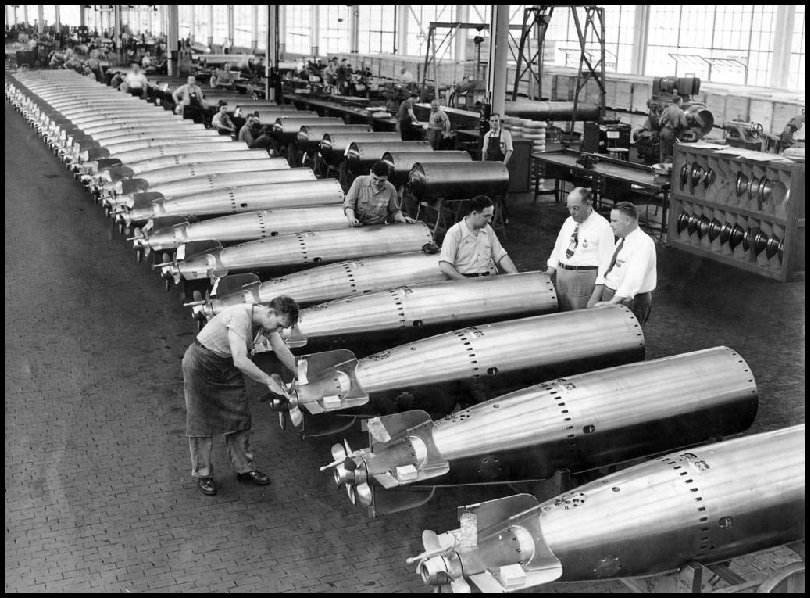
On July 5, 1943 inside the Amertorp Torpedo Ordnance Corporation's $20,000,000 factory in Forest Park, Ill., row upon row of shiny torpedoes are turned out for the Navy.
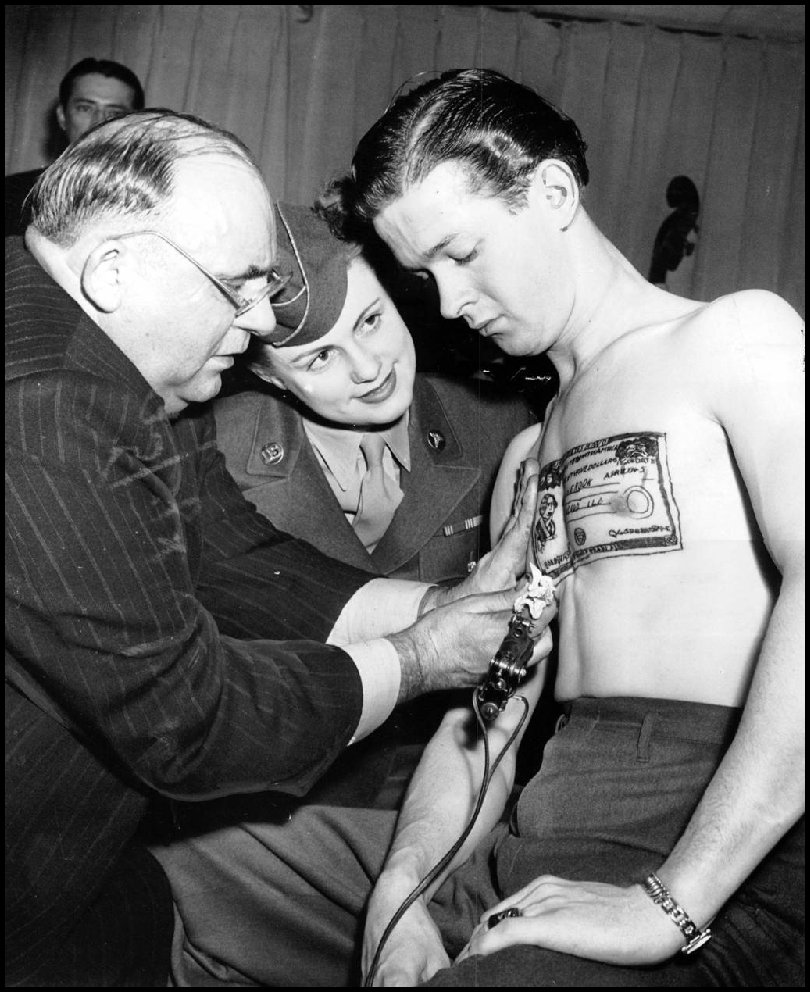
Paul Hensen tattoos the image of a war bond on the chest of Martin E. Rook while WAC Pvt. Gwendolyn Cherry, of South Bend, Ind., watches, circa April 16, 1945.

Air Raid Warden Genevieve Hennings, perches on a ladder at in the 5000 block of W. Newport Avenue, where a make-believe incendiary bomb has struck the residence. It was part of an air raid test for Chicago. May 23, 1943.
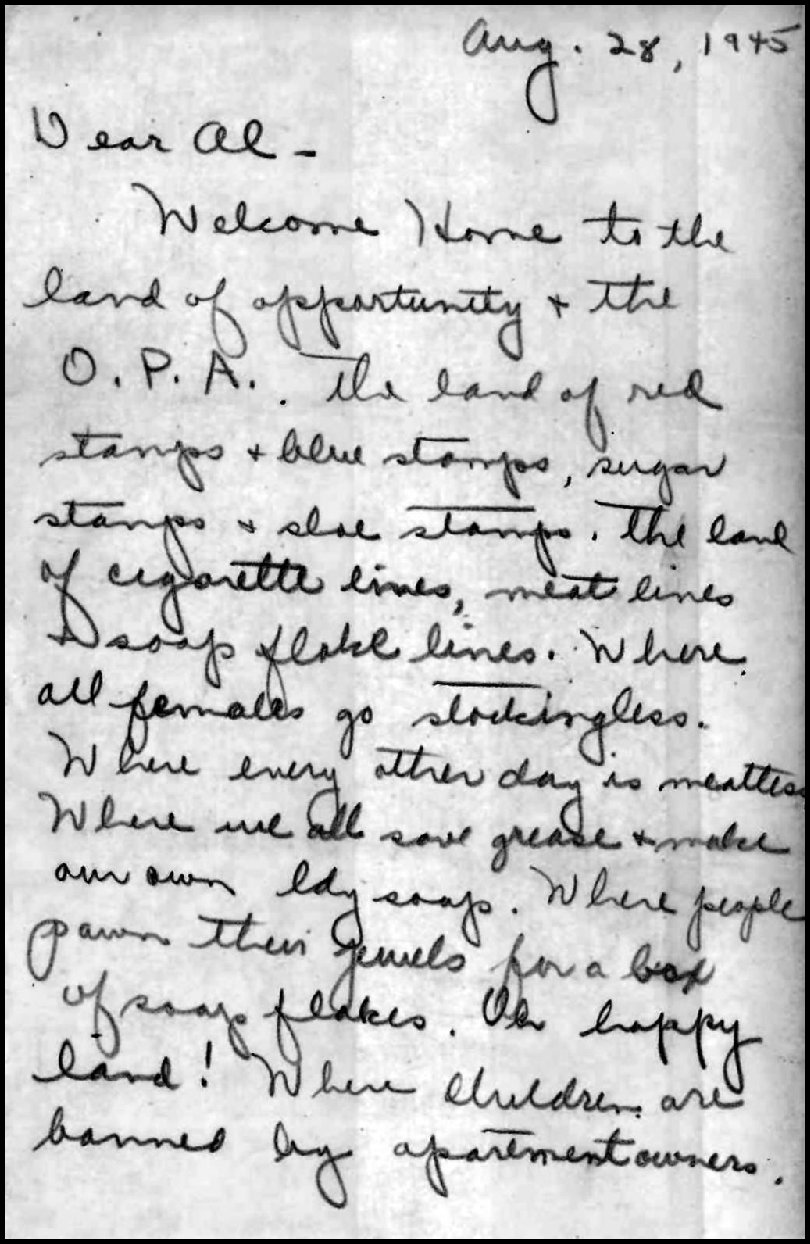
Marion Dunlevy writes a letter to her brother Al, who was fighting in World War II, describing the hardships the family endured at home during war. Letter dated Aug. 28, 1945.
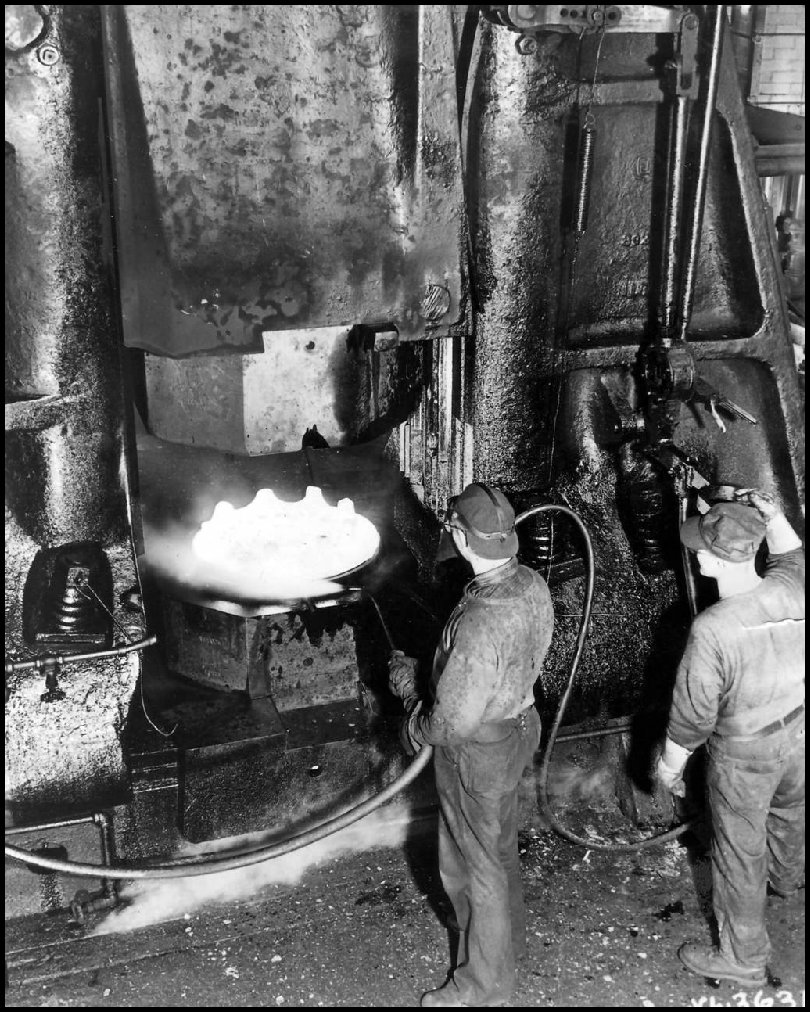
Hammers, striking a blow of 56,000 tons, are being used at Chrysler Corporations Dodge Chicago Aircraft Engine Plant to forge crankcase sections for the huge B-29 engines on Oct. 20, 1944. Shown above is the bottom part of a forge hammer forming one of these crankcases. Expert workmen control the force by a small foot pedal. The crankcases are then assembled into an 18 cylinder, 2200 horsepower, Wright air-cooled radial engine. — Dodge-Chicago.
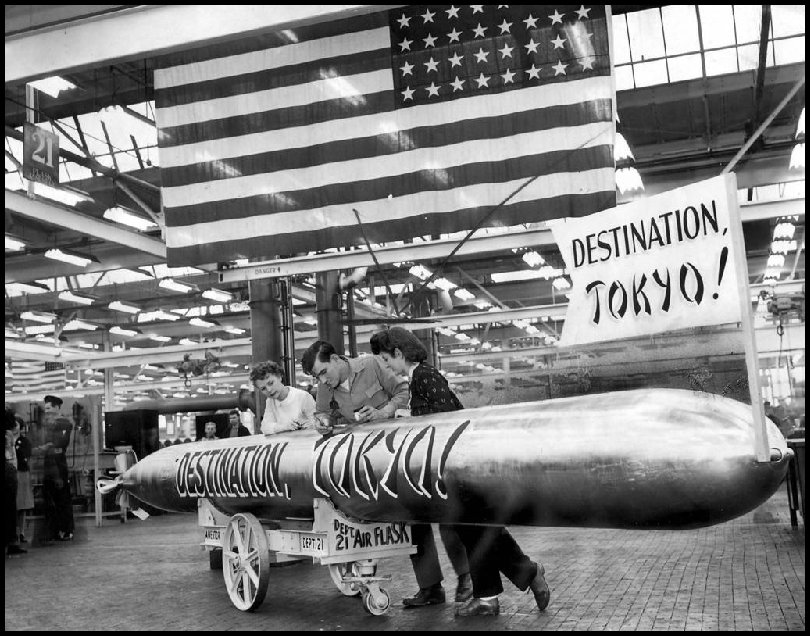
Pat Lambert, left, and Hariette Blumberg, right, watch Keith Carrigan, middle, put the finishing touches on a submarine torpedo he helped build in a Chicago arms plant in 1944. Carrigan, formerly a fireman in the Navy, was discharged after receiving a Purple Heart award and a Presidential Citation.
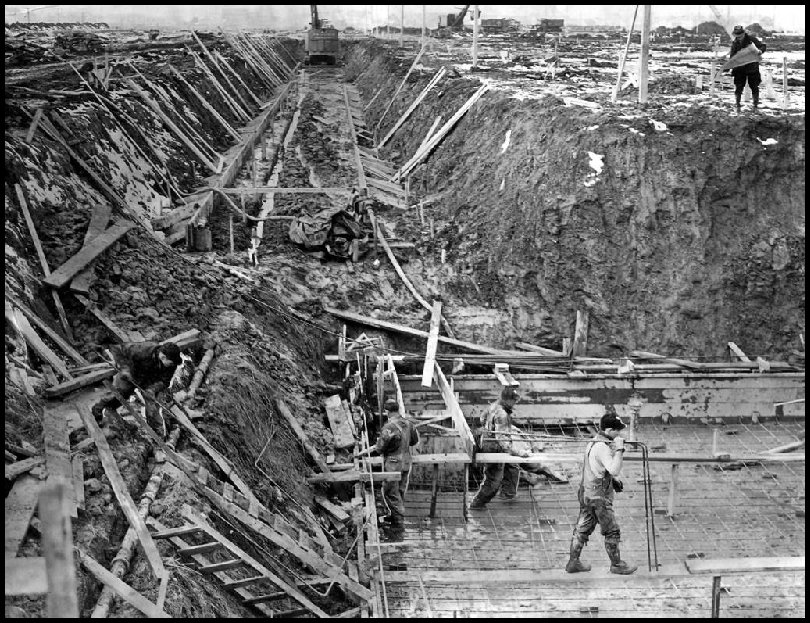
Workmen install pipe tunnels and an electrical substation at the Studebaker airplane engine factory at Cicero and Archer Avenues in Chicago in March 1941.
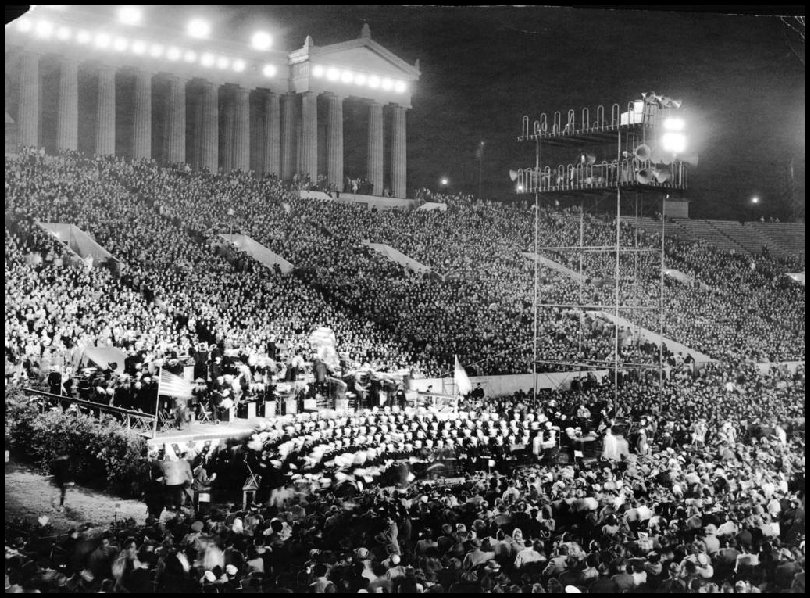
A huge crowd attends a Hollywood Bond rally in Soldier Field during Word War II. Sept. 16, 1943.
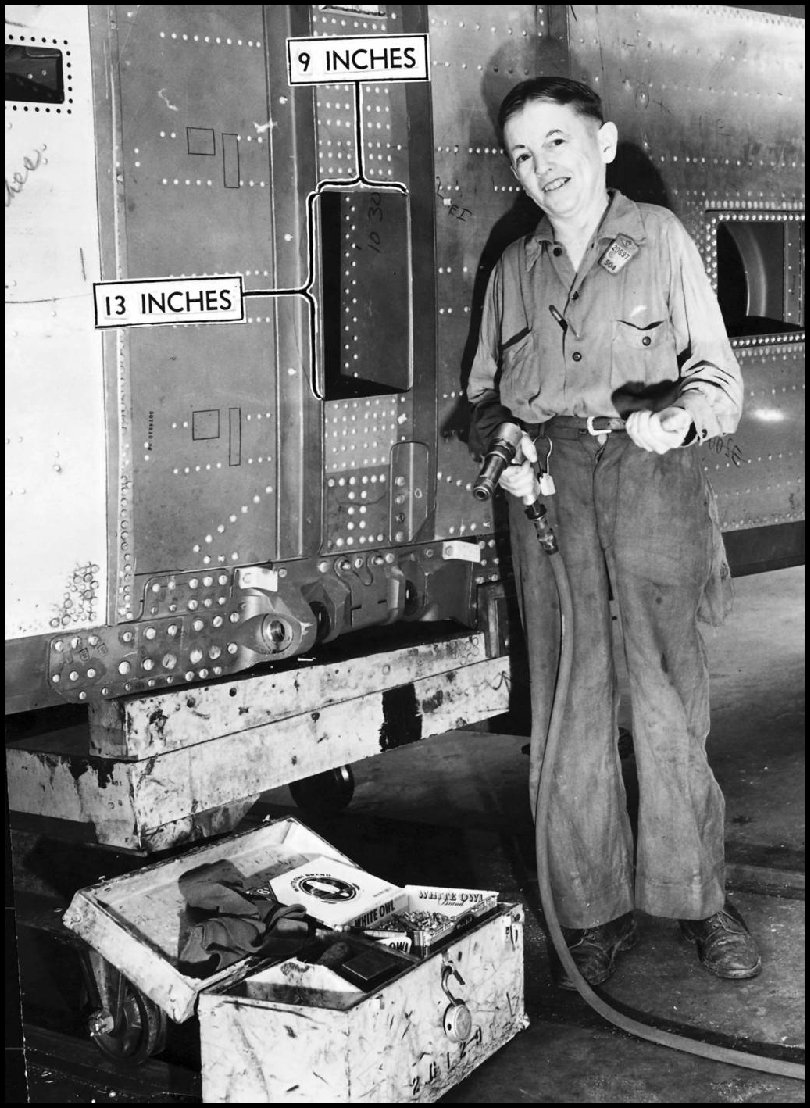
At 4 feet 7 1/2 inches, Robert Joyce of Villa Park was the tallest of three dwarfs sealing and riveting the gas tanks of C-54 cargo planes built at Douglas Aircraft Company in Park Ridge, Ill., in 1944. The tanks were so small that it was much easier for a short person to crawl around in them than an average-size man. For Joyce and the others, World War II was a chance to show that, as the Tribune said, "a little man can do a big job."
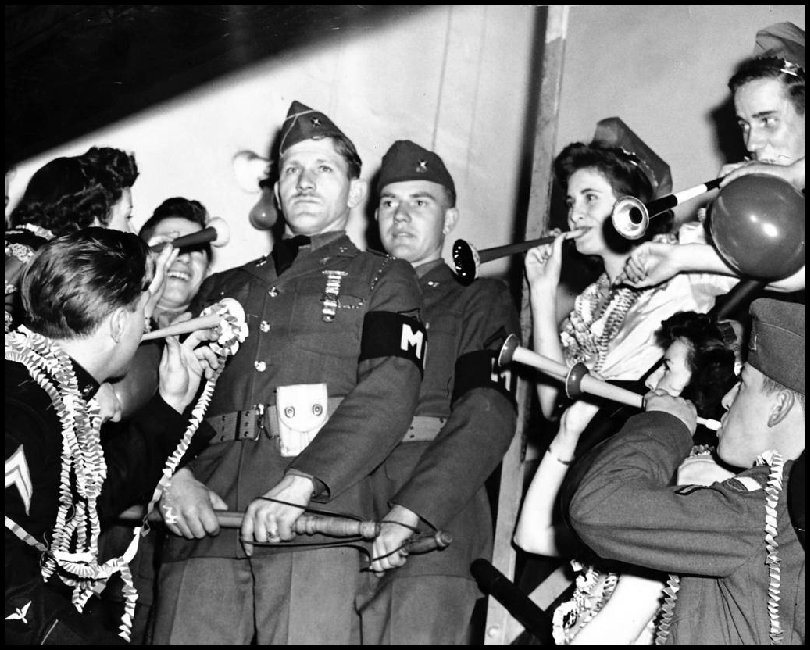
Military policemen A. W. Terbush, center left, and John Meyers, keep their focus amid New Year's revelers at the Chicago Service Men's Center.
(Terbush looks like a young Bill Cowher)
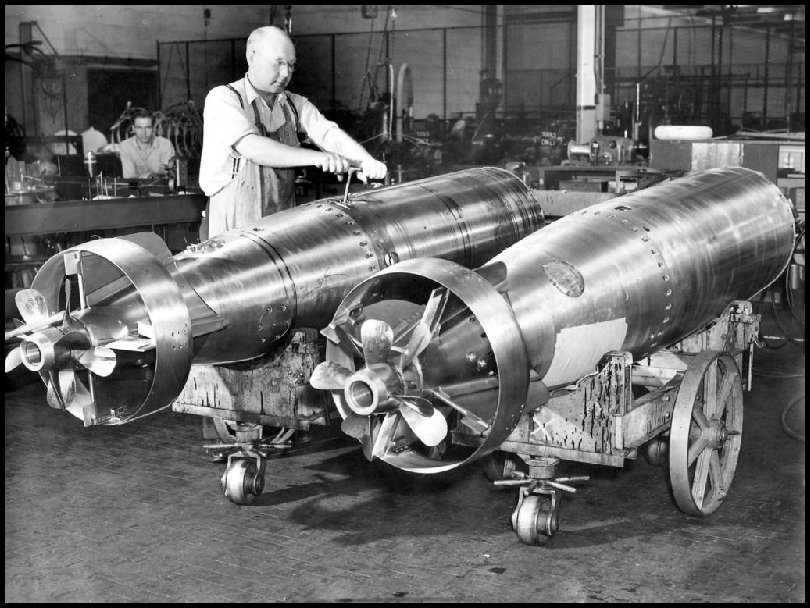
Herman J. Brandt works on the fuel and motor section of two aerial torpedoes in the Amertorp Corporation ordnance plant in Forest Park, Ill., on June 25, 1946.
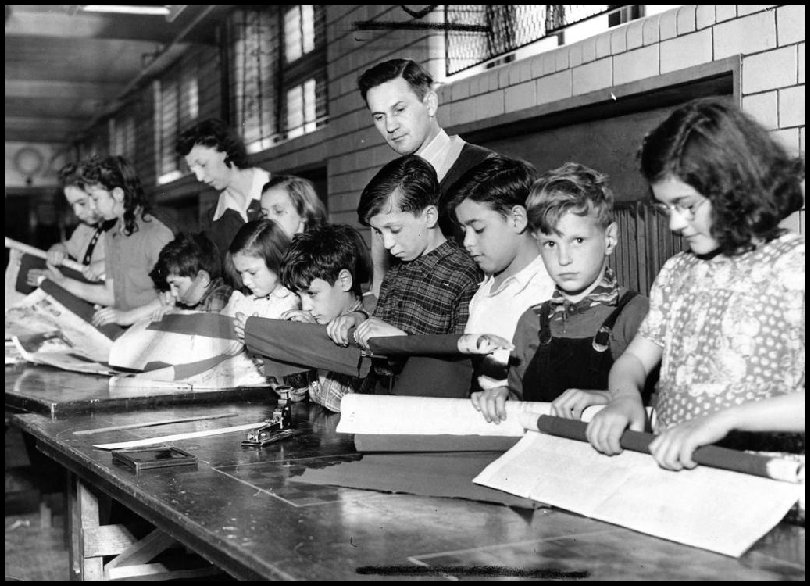
Children work under the supervision of instructor Blanche Kosner and park supervisor Andy Kovach, at the task of making fake bombs made out of newspapers and crepe paper in May 1943 for a simulated air raid in Chicago.
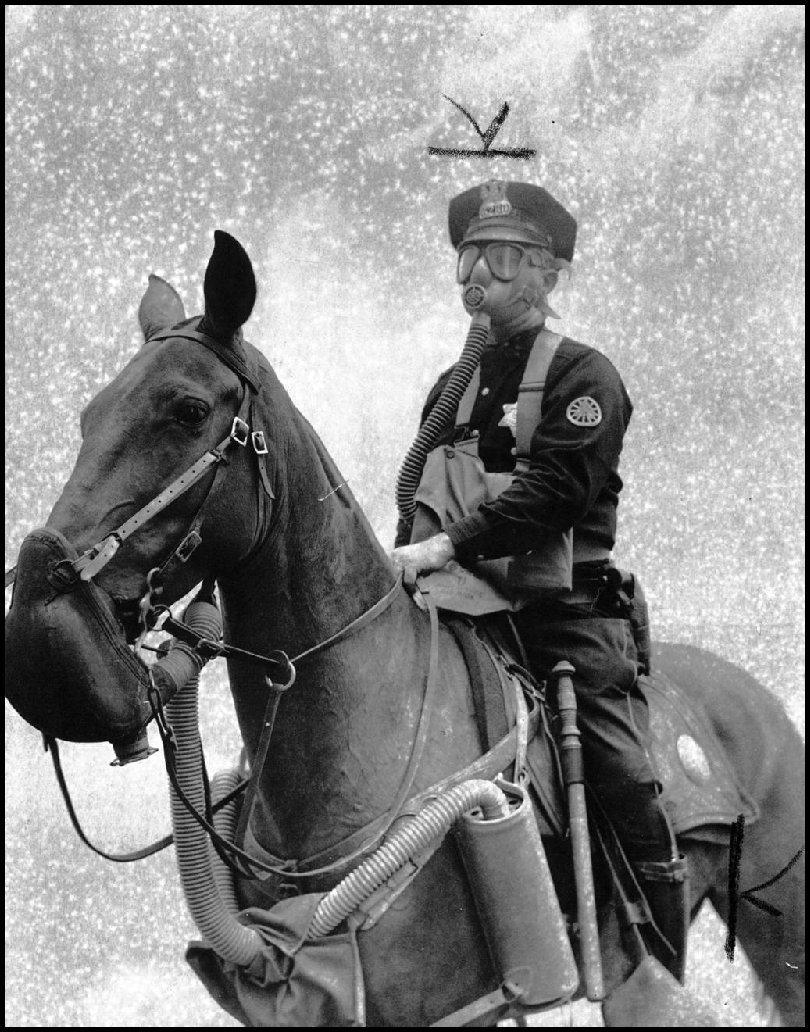
Chicago Police Officer Sullivan calmly rides his horse through a heavy smoke screen on State Street as the Chemical Warfare Service set up a simulated gas attack scene to test and show off their new masks designed to protect both men and horses. Crowds lined curbs to watch the demonstration staged to stimulate war bond sales.

Little Adrian Marquart is hoisted up as happy Chicagoans celebrate V-J Day at State and Lake Streets to mark the Allied victory over Japan and the end of World War II.
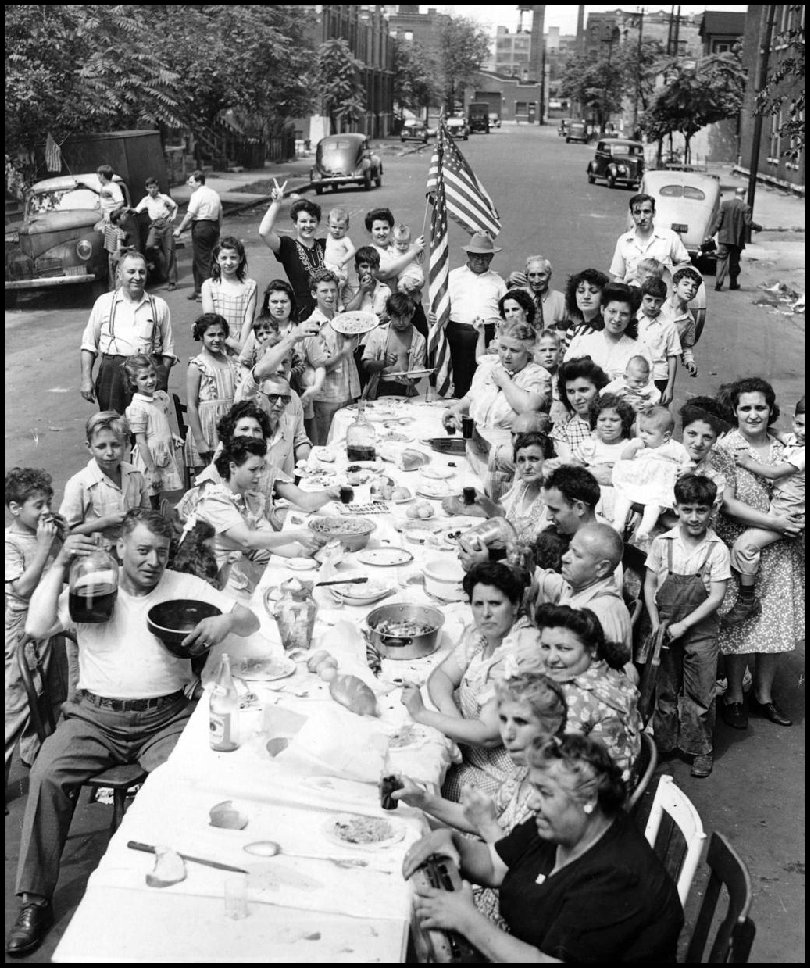
Residents of the 700 block of S. May Street celebrate victory over Japan in World War II with spaghetti, red wine, dancing and the music of tambourines.
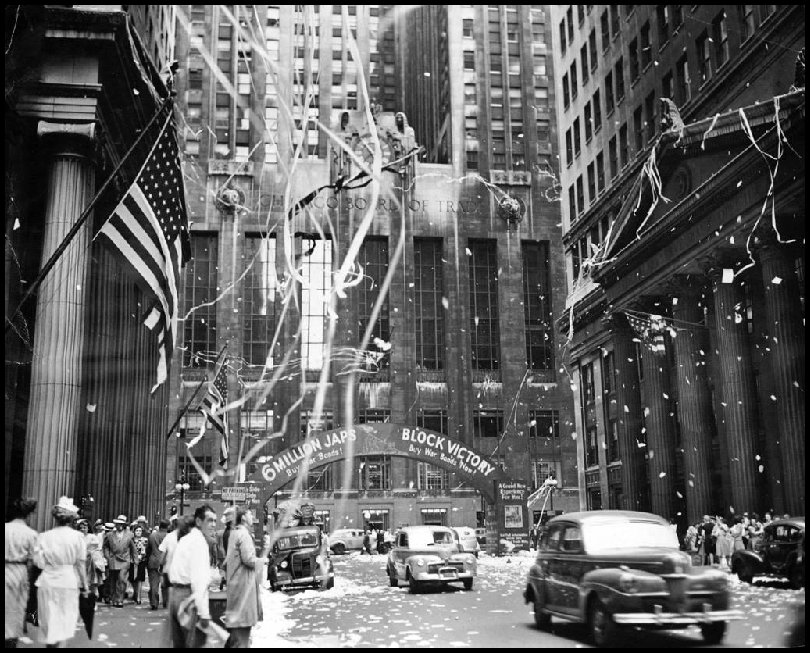
Ticker tape streams down onto LaSalle Street near Jackson Boulevard in front of the Chicago Board of Trade Building. The celebration was for V-J Day that marked victory over Japan, effectively ending World War II. Aug. 14, 1945.
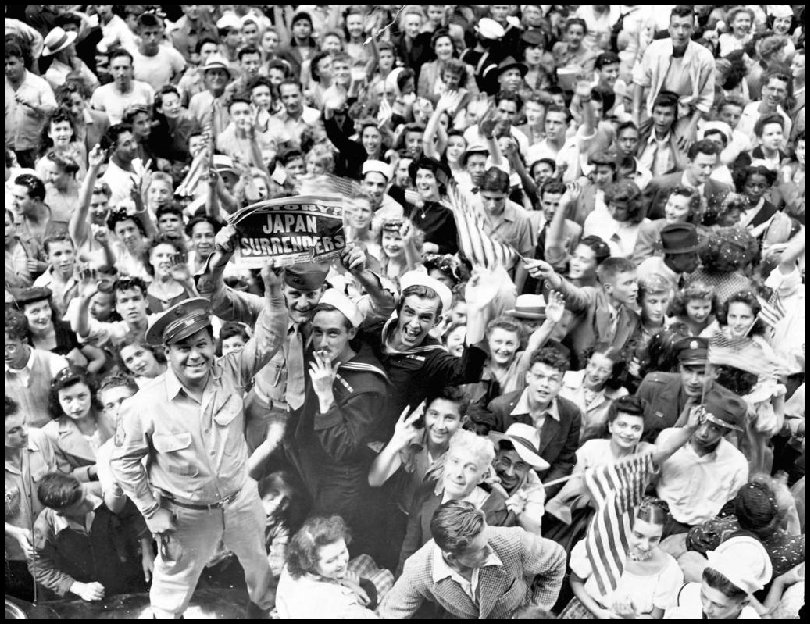
A joyous crowd celebrates the end of World War II at State and Madison Streets in Chicago. Some 500,000 people jammed the Loop streets. Servicemen hold a copy of the Chicago Herald and American.